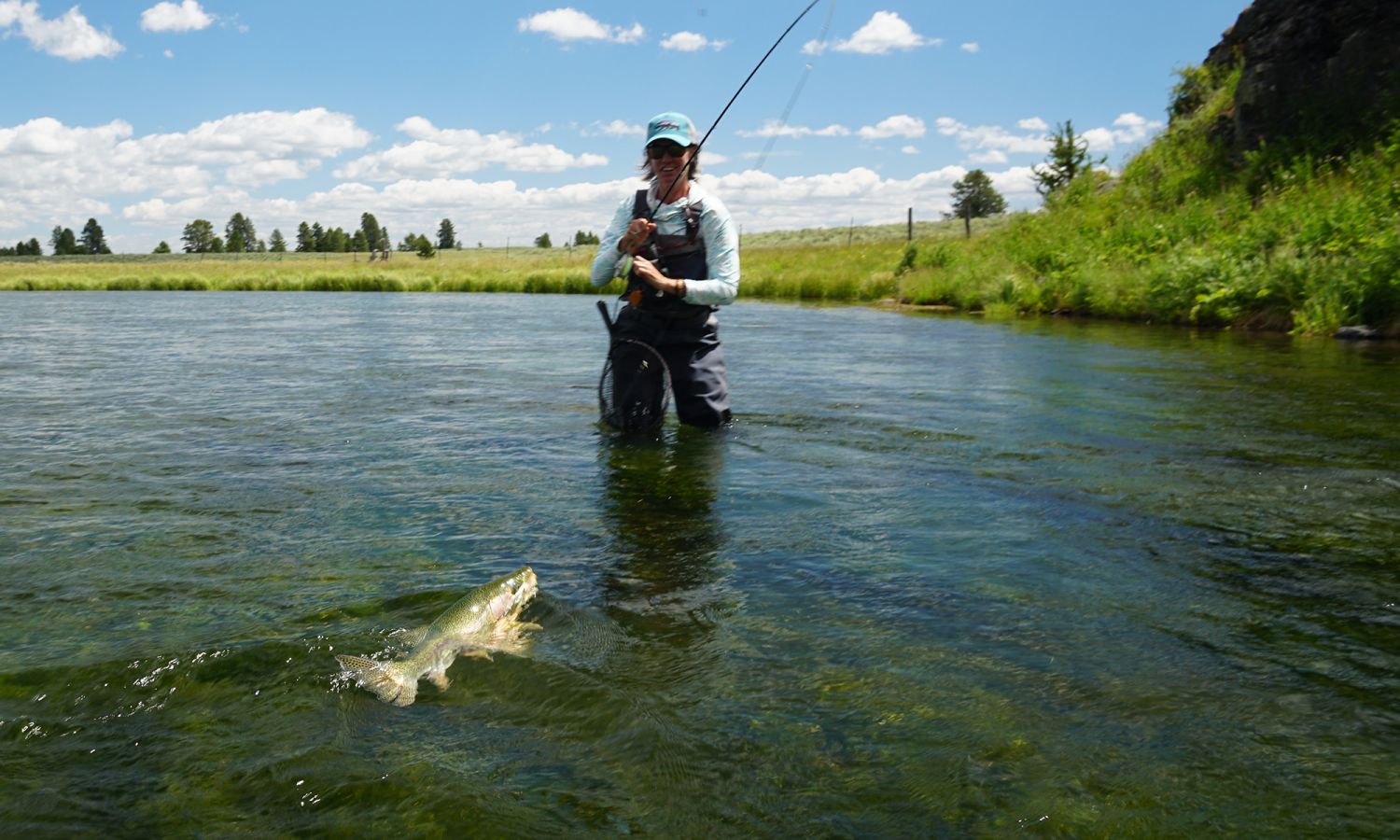The long days of early June and well into July bring with them a collection of trout related pleasures as fleeting as they are treasured. With virtually all of the prime fishing portions of the Henry’s Fork in full productivity, this period represents a wealth of aquatic hatches unmatched in any other time of year.
Spoiled undeniably by the oversize Salmon flies at the beginning and continuing through the comfort of size twelve and larger Green, Brown, and Gray Drakes, accommodating the intensity of fishing flies several sizes smaller is only part of a seasonal adjustment that must be made when temperatures warm and streamflow management alters the character of the river. Most profound in this respect is the entry of the lower Fork into a state of near dormancy as peak irrigation demands downstream from Ashton Dam cause temporary disruption to hatches as prolific and entertaining as any portion of the Henry’s Fork. And while alternatives for big rising trout exist elsewhere on the legendary fishery, they do not include the exceptional brown trout that are a part of the downstream population.
With the luxury of a wonderful option placed on temporary hold, TroutHunter guides are compelled to apply their skills in creating ways that continue to amaze even the most veteran Henry’s Fork regular. That their productivity in this demanding time seems unaltered is a true testament to uncommon professional resourcefulness.
Separate from the occasional Golden Stone and a sprinkling of remnant Gray Drakes, only the summer hatches of Flavs provide consistent opportunity to fish a mayfly pattern larger than size sixteen, and most will be somewhat smaller. Equally important are the caddis, which also become progressively smaller as the summer moves along. But as August approaches and the vegetation away from the river’s edge begins to wither, a different source of trout attraction comes into its own.

Seeming to show little adversity to heat and made vulnerable in even a stiff breeze, land-based insects including ants, beetles, and hoppers serve to fill the void on a hot and windy August afternoon. These terrestrials can provide welcome contrast to the elevated feeding selectivity that aquatic organisms seem to evoke at this time of year. Helpless to leave the water and unchanging in their physical appearance, these inhabitants of the river banks are a fly fisher’s friend with respect to the enthusiasm they can draw forth from otherwise snooty trout.
When blended into a picture of calm mornings and warm evenings when mayflies and caddis are most available, the terrestrials contribute balance to a time of day when conditions are often less than ideal.
For those who are not intimidated by the heightened demands of late summer, August represents freedom from the busy season when angler competition is at its high point, and from that standpoint it just may be the best time to be on the Henry’s Fork.






Leave a Reply